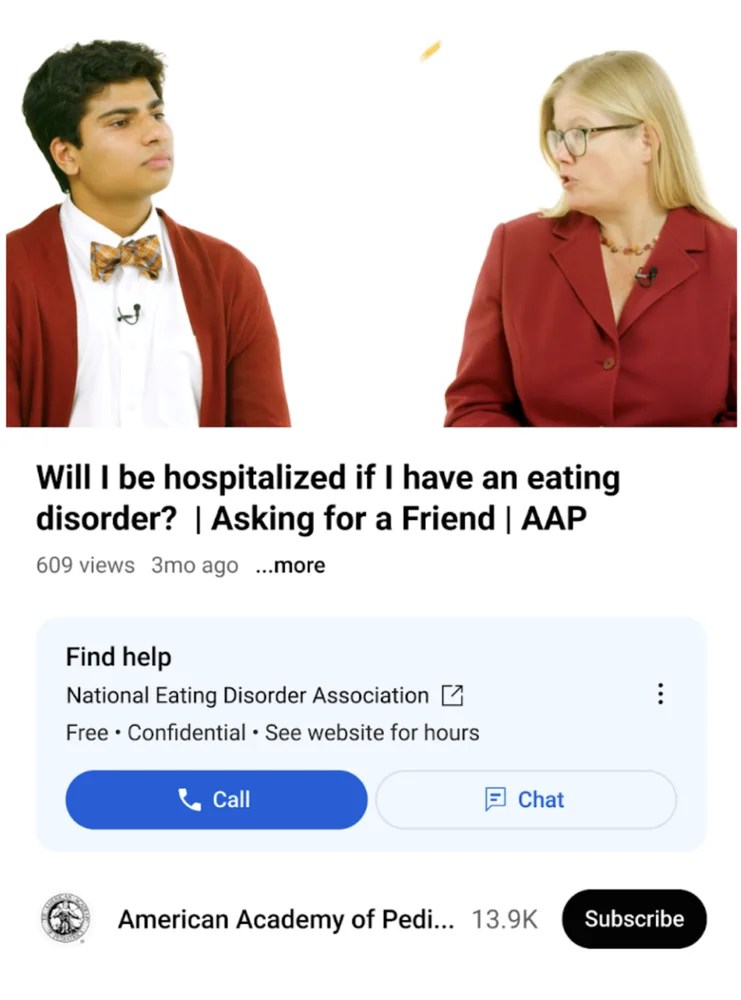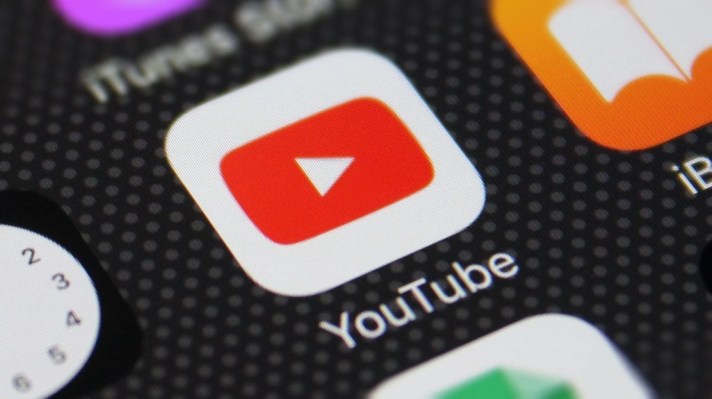YouTube is updating its guidelines for dealing with eating disorder content on its platform, the Google-owned company announced on Tuesday. Although the platform has long removed content that glorifies or promotes eating disorders, YouTube will now also prohibit content about eating disorders that users could be prompted to imitate.
Such behaviors could include purging after eating or severely restricting calories. YouTube will also prohibit content that could lead at-risk users to imitate certain behavior, such as weight-based bullying in the context of eating disorders.
YouTube also announced that videos that are centered on eating disorder recovery or include sufficient educational, documentary, scientific or artistic context (EDSA) may receive an age restriction and/or a crisis resource panel.
Content that contains EDSA or discusses disordered eating behaviors in the context of recovery may still not be suitable for all ages, YouTube says, which is why it’s introducing age restrictions on certain content about eating disorders. As a result of the updated policy, some videos will not be available to viewers under 18, if you’re signed out or if the video is embedded on another website.
For instance, YouTube may age-restrict videos where a creator is talking about the disordered eating behaviors they have engaged in while sharing their recovery journey.
“We developed this age restriction approach for eating disorder-related videos in consultation with third-party experts to strike the right balance in our continuing efforts to protect younger viewers from content they may be more susceptible to imitating than adults,” the company wrote in a blog post. “As with all our Community Guidelines updates, these age restrictions will take some time to fully ramp up, so you may not see them right away.”
YouTube currently places crisis resource panels at the top of search results related to eating disorders in U.S., U.K., India, Canada, Japan, Korea, Mexico, France and Germany. Now, the company is expanding crisis resource panels to also appear on Watch pages in these countries. YouTube believes this change will allow it to reach an even broader audience with important context and mental health resources. The platform plans to launch these panels in even more countries in the future.

Image Credits: YouTube
The policy updates, developed in consultation with the National Eating Disorder Association and other nonprofit organizations, aim to ensure that YouTube creates “space for community, recovery and resources, while continuing to protect viewers.”
The updated policy comes as social media platforms are facing increasing scrutiny for negatively impacting young users. In 2021, lawmakers questioned executives from YouTube, TikTok and Snapchat about how their platforms deal with eating disorder content. Although the companies testified that they each have policies prohibiting content that promotes eating disorders, senators cited evidence from constituents about teenagers on these platforms who have still suffered from illnesses like anorexia and bulimia.
During the hearing, YouTube executives pointed out how some users can find solace in a video about how someone overcame an eating disorder, and that this content can be uplifting and help teens know that they’re not alone in what they’re experiencing. The company is now addressing concerns that although this type of content aims to be helpful, it can sometimes negatively impact users, hence the new age restrictions on certain content about eating disorders when it comes to recovery.
The features announced today will be visible starting today and ramping up in the coming weeks. YouTube says these efforts are ongoing and that it will continue working toward ensuring its platform is a safe place for users.
